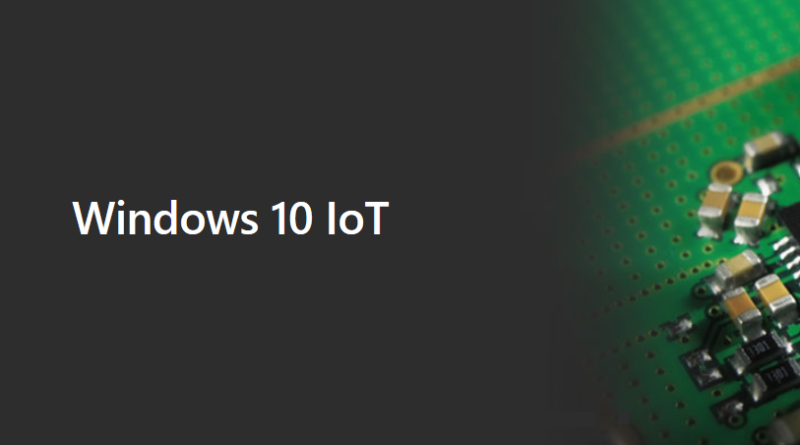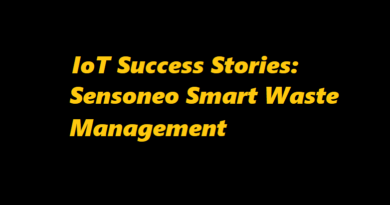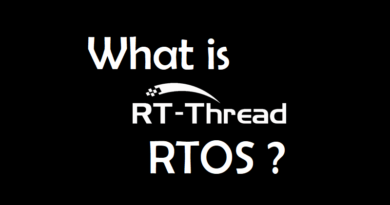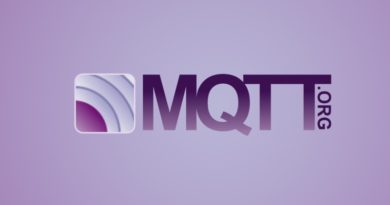Windows 10 IoT
Windows IoT, formerly Windows Embedded, is a family of operating systems from Microsoft designed for use in embedded systems. Microsoft currently has different subfamilies of operating systems for embedded devices targeting a wide market, ranging from small-footprint, real-time devices to point of sale (POS) devices like kiosks. Windows Embedded operating systems are available to original equipment manufacturers (OEMs), who make it available to end users preloaded with their hardware.
Windows 10 IoT is a member of the Windows 10 family that brings enterprise-class power, security and manageability to the Internet of Things. It leverages Windows’ embedded experience, ecosystem and cloud connectivity, allowing organizations to create their Internet of Things with secure devices that can be quickly provisioned, easily managed, and seamlessly connected to an overall cloud strategy.
So Microsoft Simplify the Internet of Things (IoT) with a rich device platform, world class developer tools, enterprise grade support and a global partner ecosystem. Do more at the edge with machine learning capabilities and scale with the power of Azure IoT.
Windows IoT come with closed Source, Hybrid kernel and Commercial proprietary software license.
Features of Windows IoT
Faster time-to-market – IoT solutions don’t have to be complex. Build and provision solutions faster with Windows IoT, integrated by design with Azure IoT.
Intelligent Security – Protect your devices and data from device to cloud with the latest security advances in Windows 10 built-in and always up to date.
Intelligent Edge – Data has gravity, with machine learning capabilities on the device, you can gain insight and take action to reduce costs and increase efficiency.
Cloud integration – The best support for integrated Azure IoT as well as support for Azure IoT Edge.
Microsoft rebranded “Windows Embedded” to “Windows IoT” starting with the release of embedded versions of Windows 10.
Enterprise – Windows 10 IoT Enterprise, based on Windows 10 Enterprise LTSC/LTSB, is the successor to both Embedded Industry and Embedded Standard with plain unlabeled, Retail/Thin Client, Tablet, and Small Tablet versions available; differing only in licensing.
Mobile– Windows 10 IoT Mobile, based on Windows 10 Mobile, is the successor to Embedded Handheld.
Mobile Enterprise – Windows 10 IoT Mobile Enterprise adds ARM support, multiple user profiles, advanced lockdown, and other capabilities, but is otherwise identical to the normal Mobile version.
Core – Windows 10 IoT Core is considered by some to be the successor to Windows Embedded Compact, although it maintains very little compatibility with it. Optimized for smaller and lower-cost industry devices, it is also provided free of charge for use in devices like the Raspberry Pi for hobbyist use.
Core Pro – Windows 10 IoT Core Pro provides the ability to defer and control updates and is licensed only via distributors; it is otherwise identical to the normal IoT Core version.
Differences between Windows 10 IoT Core and Windows 10 IoT Enterprise
While Windows 10 IoT Core and Windows 10 IoT Enterprise are similar in name, there are differences in what they offer as well as what they support. Below is a feature list that highlights edition differences.
Windows 10 IoT Core Windows 10 IoT Enterprise User experience One UWP app in the foreground at a time (see IoT Shell documentation for app backstack handling) with supporting background apps and services. Traditional Windows Shell with Advanced Lockdown Features Headless supported Yes Yes App architecture supported UWP UI only Full Windows UI support (e.g. UWP, WinForms, etc) Cortana Cortana SDK Yes Domain join AAD only AAD and Traditional Domain Management MDM MDM Device Security Technologies TPM, Secure Boot, BitLocker, Device Guard, and Device Health Attestation TPM, Secure Boot, BitLocker, Device Guard and Device Health Attestation CPU Architecture support x86, x64, and ARM x86 and x64 Licensing Online Licensing Agreement and Embedded OEM Agreements, Royalty-free Direct and Indirect Embedded OEM Agreements Usage scenarios Digital Signage, Smart Building, IoT Gateway, HMI, Smart Home, Wearables Industry Tablets, POS, Kiosk, Digital Signage, ATM, Medical Devices, Manufacturing Devices, Thin Client
According to official Microsoft website:
Earlier this year, Microsoft and NXP announced a private preview of Windows 10 IoT Core on NXP i.MX6 and i.MX7 applications processor families. Hundreds of participants expressed their interest in the combination of 10 years of Windows security updates and the flexibility and reliability of NXP silicon.
A public preview for the i.MX 8M family and a commercial release of the i.MX 6 and i.MX 7 BSP will be available in the future.
Windows 10 IoT Core Services will have three main benefits:
- 10 years of Windows OS support via the Windows Long-Term Servicing Channel (LTSC) which provides quality updates to keep device security up to date. Devices using the LTSC release won’t receive feature updates, enabling them to focus on stability by minimizing changes to the base operating system. Microsoft typically offers new LTSC releases every two to three years, with each release supported over a 10-year lifecycle.
- Update control with the newly announced Device Update Center (DUC) which provides the ability to create, customize, and control device updates. These updates are distributed by the same Content Distribution Network (CDN) as Windows Update which is used daily by millions of Windows customers around the world. Updates can be applied to the operating system, device drivers, as well as OEM-specific applications and files. Updates can be flighted to test devices prior to broader distribution.
- Device Health Attestation (DHA) enables enterprises and OEMs to raise the security bar of their organization with hardware-attested security. Evaluating the trustworthiness of a device at boot is essential for a trusted IoT system and a device cannot attest to its own trustworthiness. Instead, this must be done by an external entity such as DHA Azure cloud service. This service evaluates device health and can be combined with a device management system, such as Azure IoT Device Management. With this, you can take actions, for example, re-imaging the device, denying network access or creating a service ticket.
Source: https://blogs.windows.com/windowsexperience/2018/06/05/windows-10-iot-tomorrows-iot-today/#wl3TcsFseJ6XROUZ.97, https://blogs.windows.com, https://www.microsoft.com/en-us/WindowsForBusiness/windows-iot, https://www.microsoft.com





Pingback: IoT OS and RTOS for Internet of Things devices - IoTbyHVM
Pingback: IoT OS and RTOS for Internet of Things Devices - CompileIoT
Pingback: Top IoT Operating Systems in 2020 | IoT OS and RTOS
Pingback: OS and RTOS for IoT (Internet of Things) Devices — OnionLinux